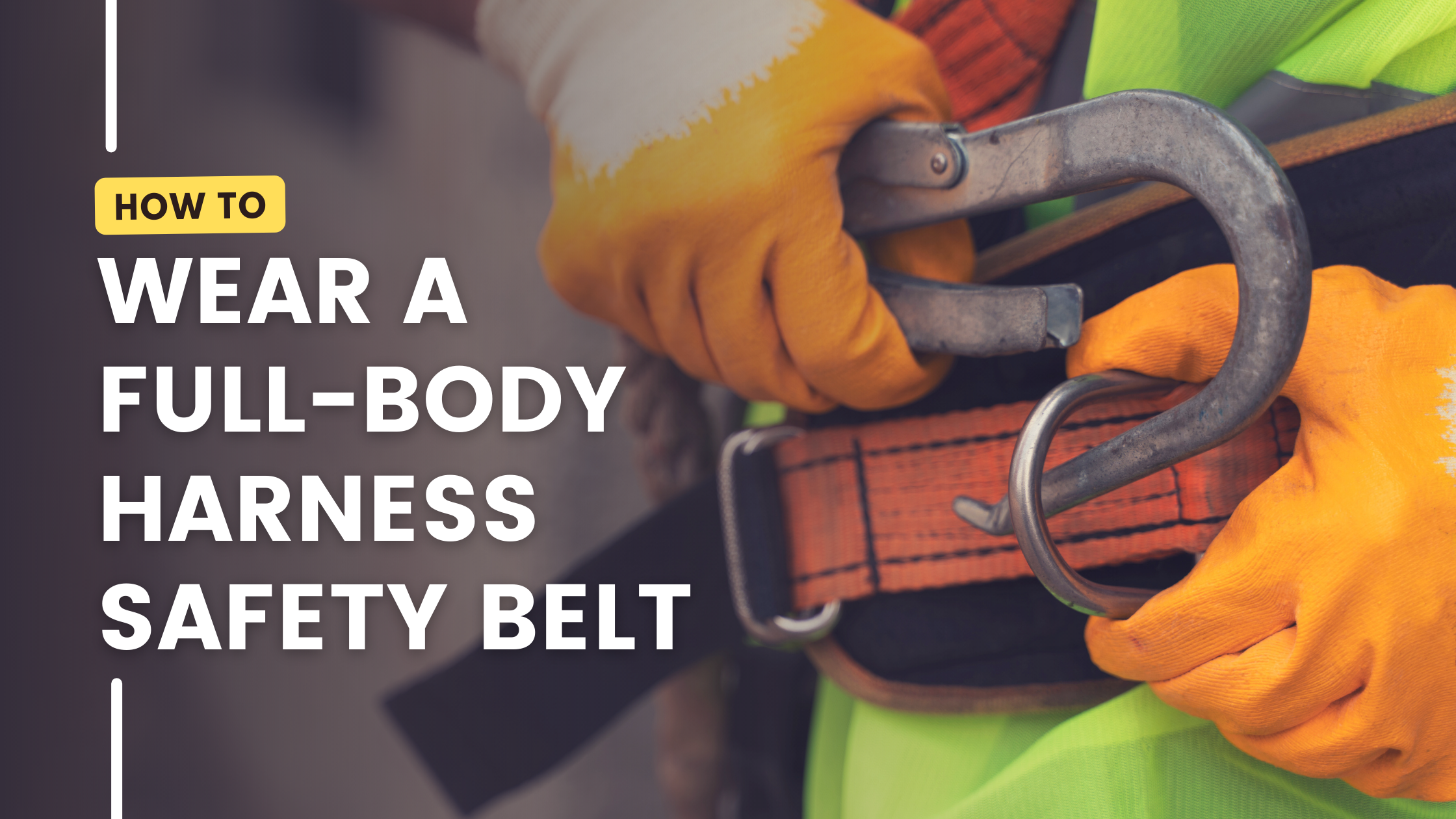There’s no way to operate securely at heights without proper fall protection, and the personal fall arrest system is the last line of defense. These systems are made up of a variety of components, including anchors, connections, and lanyards. The safety harness, on the other hand, is what connects the complete equipment to the worker. If the harness fails, the fall arrest system as a whole will not protect the person.
As a result, safety harnesses are essential. However, they will only function correctly if they are properly installed. We’ll go over the six steps of donning a full-body harness in this article, with photographs to demonstrate each step.
USER INSTRUCTIONS FOR THE FULL-BODY SAFETY HARNESS
The European PPE Directive 89/686/EEC classifies the full-body harness as personal protective equipment (PPE), and it has been proven to conform with this directive through the standardized European standard EN 361:2002.
Before you use the harness, make sure you read the directions carefully.
The harness is made to reduce the risk of falling from great heights and to protect you from it. PPE, on the other hand, cannot provide complete protection, and extreme caution must always be exercised when performing dangerous tasks.
- Performance and use restrictions
- Safety Constraints Harness/Belt
- The harness should be the user’s personal property.
- The anchor device’s strength should meet the requirements of AN 795/1996 OR be at least 10kN.
- In any situation when there is a risk of free fall, the complete body harness should be used.
- It should not be utilized in environments that are extremely acidic or basic.
- During use, shipping, and storage protect the harness from mechanical risks such as sharp edges, tools, sunlight, and UV radiation.
If the harness contains a back D-Ring extension hand, make sure the overall length of the lanyard, energy absorber, connectors, and extension hand does not exceed 2.0ms. The user must read the energy absorber’s instructions and comprehend the clearance requirements.
Steps to putting on the belt:
Step 1: Remove the Harness and Shake It Out
Shake the harness from the dorsal D-ring to allow the straps to fall into place.
Step 2: Release the Straps and Unbuckle the Buckles
Unbuckle and release the straps if the chest, leg, or waist straps are buckled.
Step 3: Put on the Straps and Adjust Them
Adjust the fit of the straps over your shoulders so that the D-ring is in the center of your back, between your shoulder blades.
Step 4: Connect the Leg Straps
Leg straps should be connected or buckled.
Pass the webbing through the buckle and the tongue through the grommet to secure a tongue buckle.
Pass the webbing under the buckle, over the roller, and down between the roller and the frame to secure a parachute buckle. Tighten the webbing at the end. Webbing must reach at least three inches past the buckle.
The leg straps should fit snugly and allow you to stand up straight without being obstructed, regardless of the type of buckle on your harness. You should be able to fit your hand between the strap and the leg as a general rule.
The waist strap should be linked after the leg straps if the harness has one.
Step 5: Connect the Chest Strap
Chest straps for a full-body safety harness
Connect the chest strap and adjust the fit so that it crosses the chest in the middle. The shoulder straps should be firm and the straps should fit snugly
Step 6: Adjust the Straps
Straps on the full-body safety harness can be adjusted.
Adjust the straps once they’re all attached and secured so the harness fits snugly while yet allowing full range of motion. Use the loop keepers to keep any straps that hang down after adjustment out of the way.
FITTING AND SIZING OF FULL-BODY SAFETY HARNESS:
To use the harness, go through steps 1 through 6. Both the leg straps and the shoulder straps can be adjusted to meet the user’s size. A harness that is either too loose or too tight will hinder movement and provide insufficient fall protection system. The harness’s size is shown on a label attached to it, and it is universal in size.
The Safety Harness/Belt is made of the following materials.
The harness’s whole webbing is constructed of polyamide, and the breaking tenacity of the webbing and yarns must be at least 0.6N/tex.
Warning
Ensure that all other components in the fall arrest systems, such as lanyards, karabiners, and so on, are used according to the user instructions.
Compatibility
In rare cases, it may be required to combine the harness with appropriate boots, gloves, helmets, and ear defenders to maximize safety. In this instance, talk to your provider to make sure your protective gear is appropriate and compatible for high-risk activities. Also, make sure the product is used by someone who has been trained and/or is competent.
Safety Harness/Belt storage and transportation
When not in use, keep the harness away from extremes of temperature in a well-ventilated place. Never put anything heavy on top of it. Excess folds should be avoided as much as possible, and the item should be stored vertically. If the product is moist, let it dry completely before putting it away.
